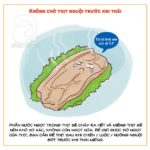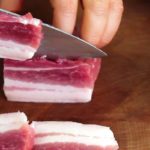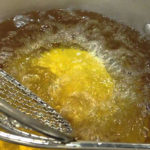Meat is an essential source of protein and other nutrients in our daily meals. There are various types of meat, such as pork, beef, and chicken, each offering a range of culinary possibilities. However, one simple yet crucial step that not everyone knows how to do properly is cutting the meat. Specifically, which way should you cut it: with or against the grain?
Experienced chefs and cooks often provide the following answer: For most types of meat and cooking methods, such as stir-frying, steaming, boiling, or frying, it is generally recommended to cut the meat across the grain. The reason behind this is that cutting the meat across the grain shortens the muscle fibers, resulting in more tender meat that is easier to chew and enjoy. On the other hand, cutting the meat along the grain can make it chewier and tougher.
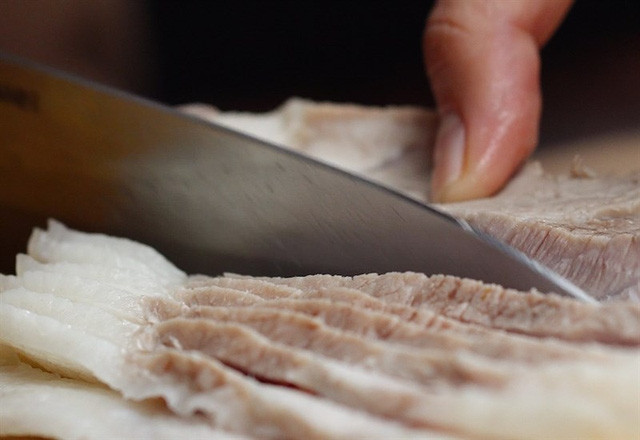
Cutting most types of meat across the grain results in tender and beautiful slices (Illustration)
However, there is an exception to this rule. When preparing dishes like salads or dried meat (such as grilled pork, beef jerky, or dried chicken), it is advisable to cut the meat along the grain. These dishes require a chewier texture, and cutting along the grain helps retain the meat’s structure, preventing it from falling apart during the drying process.
To cut the meat correctly, it is essential to understand how to identify the grain. Examine the cross-section of the meat; if you see long, parallel muscle fibers, that’s the direction of the grain. If the fibers run horizontally across the meat, then it is across the grain.
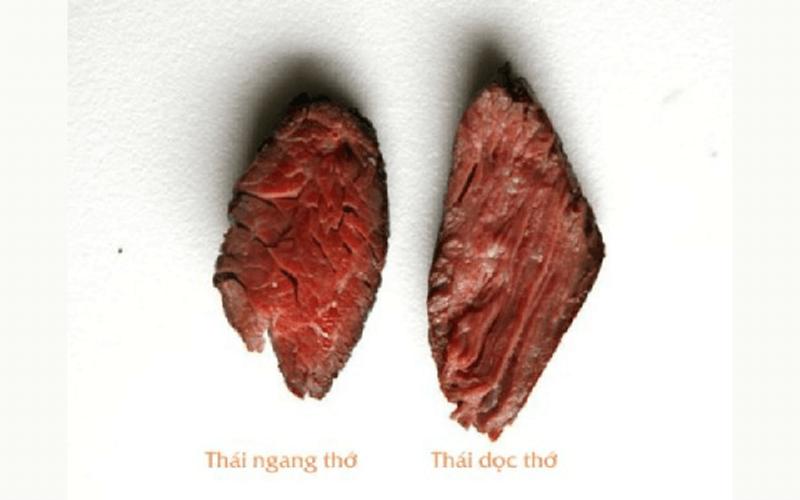
The key to cutting meat correctly lies in identifying the direction of the grain (Illustration)
Tips for Easy and Quick Meat Cutting
Each type of meat requires a slightly different approach to achieve the desired results.
First, let’s talk about pork – one of the most popular and commonly used meats in families. Experts suggest partially freezing the meat for about 15-20 minutes before cutting it. This helps harden the meat slightly, making it easier to slice. Once the meat is out of the freezer, consider your intended use. For stir-frying or steaming, cut the meat into thin, long slices. If you plan to braise or stew it, go for larger, thicker pieces. Ensure you have a sharp knife and a suitable cutting board.
When cutting the meat, hold the knife perpendicular to it and cut with confidence to ensure smooth and even surfaces. Use your other hand to firmly hold the meat to prevent slippage.
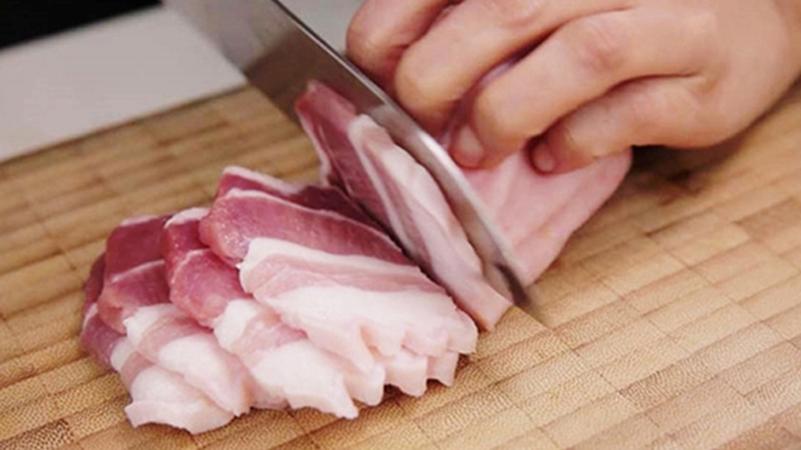
Illustration
Next is beef. Similar to pork, it is recommended to partially freeze beef before cutting it. For grilling, stir-frying, or making soup, cut the meat across the grain into relatively thin slices. This will result in tender and aesthetically pleasing beef. For braising or stewing, cut it into square, moderately sized pieces.
When cutting beef, press the knife firmly against the meat, holding it at a slight angle and pointing it outward to prevent the slices from becoming too thick. Then, slowly lower the knife to cut the meat.
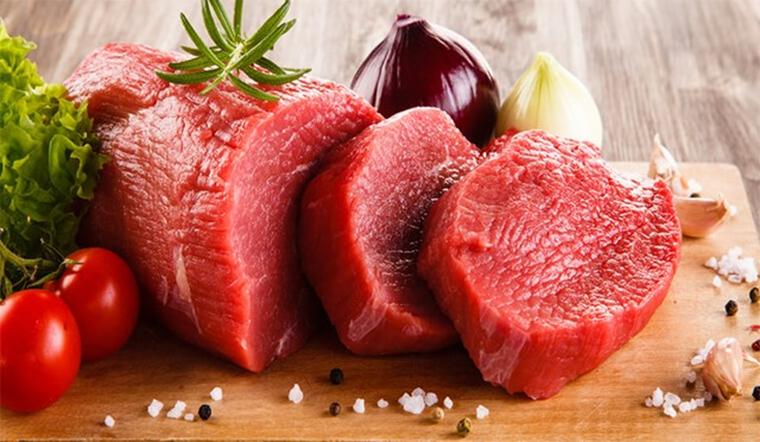
Illustration
As for chicken, duck, and other poultry, the goal is not to slice but to chop. To do this effectively, you’ll need a large and sturdy chopping board. The heavier and more solid the board, the easier it will be to chop the meat. A sharp knife is also crucial. Identify the joints of the chicken or duck and chop with confidence. This will result in neat and intact pieces. The recommended sequence for chopping poultry is to start with the head and neck, followed by the thighs and back/breast. For joints like the wings and thighs, you can even use your hands to break them apart if you know where the joints are.
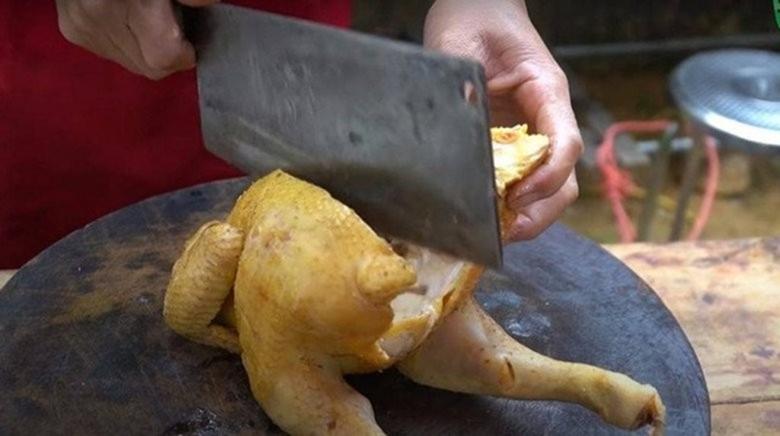
Illustration
In addition to these tips for efficient meat cutting, it is essential to avoid the following common mistakes:
– Cutting meat when it is too fresh can make it difficult to achieve thin slices.
– Cutting meat immediately after cooking, while it is still hot, can lead to messy and unattractive slices.
– Using the wrong type of knife, such as a fruit paring knife, can result in uneven and unsightly slices, requiring more time and effort.
– Not using separate cutting boards and knives for raw and cooked meat can lead to cross-contamination.
According to Đời sống Pháp luật
5 Common Cooking Mistakes You Need to Avoid
“Overheating oil, using the same utensils for raw and cooked food, over-stirring, and cutting meat right after boiling are common habits when it comes to food preparation for many people. These practices not only deplete essential nutrients from the food but may also have undesirable effects on one’s health.”
“The Ultimate Guide to Speedy and Easy Food Chopping”
“Even the most experienced home cooks can fall victim to the occasional kitchen mishap, such as a nasty knife cut or a tough, chewy steak. But fear not, with a few simple tips and tricks, you can easily master the art of food preparation and say goodbye to kitchen catastrophes. Learn how to effortlessly slice through even the toughest meats and discover the secrets to a perfect, tender bite every time. It’s time to elevate your culinary game and become a master chef in your own right.”

